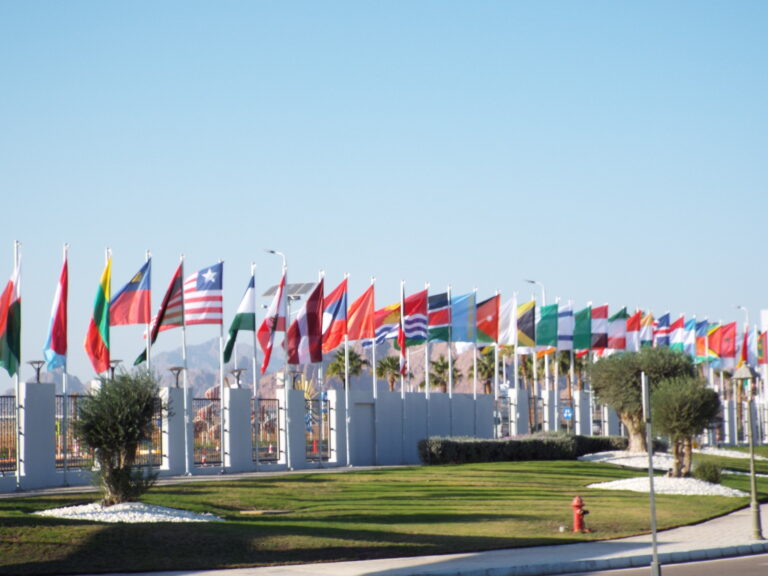Climate-impacted reefs may continue to supply vital micronutrients through fisheries
Acknowledgements to James Robinson.
Coral reefs rank among the most productive and diverse ecosystems on Earth – including more than 700 coral species and 4000 species of fish [1, 2]. This high level of biological diversity benefits hundreds of millions of people worldwide through various ecological and economical goods and services [3] ranging from coastal protection to tourism and food supply [4]. Specifically, coral reef fisheries represent valuable sources of macro- and micronutrients (ion, zinc, selenium, omega3-fatty acids) to coastal communities [5]– with an overwhelming number residing in low-income countries.

Herbivorous fishes. Photo by James Robinson/Lancaster University..
As highlighted in a recent article published in the journal One Earth by a team of international researchers led by Dr. James Robinson – reef fishes could provide greater levels of omega-3 fatty acids and calcium as compared to terrestrial-animal food sources such as beef, pork and chicken. Using a dataset encompassing reef fish species representative of fish families caught in the tropics, the authors also underlined greater (zinc) or similar levels of micronutrients (ion, selenium, calcium) in reef fishes compared to wild-caught pelagic fish and overall higher micronutrient contents (calcium, iron and zinc) compared to farmed fish such as tilapia – further emphasizing the importance of effective fishery management in developing countries (e.g. sustainable fisheries).
It is now widely recognized that coral reefs are under major threats due to global warming and local stressors such as pollution, urbanization and overharvesting of marine resources. For instance, the 1998 climate-induced mass bleaching event impacted >90% of live coral cover in the Seychelles [7]. Following this bleaching event, 60% of reef areas recovered into coral dominated ecosystems, while 40% of reefs transitioned to macroalgae dominated areas. Fleshy macroalgae compete with corals on reef ecosystems for nutrients and light and can in the long term cause wide scale coral bleaching and mortality as well as significant reduction in reef biodiversity [8].

Coral reefs overgrown by macroalgae in the Seychelles. Photo by Nick Graham/Lancaster University.
This particular setting offered a unique opportunity for researchers to investigate the impact of climate-induced bleaching on fish-derived micronutrient availability. By using a combination of surveys, modeling and experimental fishing, Robinson and colleagues found greater concentrations of iron and zinc in fish collected from reefs that transitioned to macroalgae areas compared to coral-dominated reefs. Macroalgae such as Sargassum seaweeds are known to harbor high concentrations of minerals – which could explain why herbivorous fishes such as Scaridae found in greater abundance in macroalgal-dominated reefs – contained greater concentrations of zinc and iron in their tissue muscles.

Recovering reefs in the Seychelles. Photo by Nick Graham/Lancaster University.
These findings provide a glimmer of hope for coastal communities as micronutrient-rich fish species, increasing in abundance following bleaching events, may continue to provide some vital micronutrients amid shadows of upcoming bleaching events. However, changes in coral reef landscape and habitat loss – as a result of global and local stressors – have direct impacts on the functional diversity and abundance of reef fishes, particularly those relying on the reef structure for shelter and food resources [9]. This study therefore underlines the crucial importance of effective management of small-scale reef fisheries and equitable distribution of resources to coastal communities in the tropics – which are known to experience high levels of micronutrient deficiencies, leading to millions of premature deaths annually [10].
Cited bibliography:
[1] Veron, J. E. N., Stafford-Smith, M., Turak, E., & DeVantie, L. M. Corals of the World. 2000. Australian Institute of Marine Science, Townsville.
[2] Lieske, E., & Myers, R. (2002). Coral reef fishes: dynamics and diversity in a complex ecosystem. Academic Press.
[3] Woodhead, A. J., Hicks, C. C., Norström, A. V., Williams, G. J., & Graham, N. A. (2019). Coral reef ecosystem services in the Anthropocene. Functional Ecology, 33(6), 1023-1034.
[4] Béné, C., Barange, M., Subasinghe, R., Pinstrup-Andersen, P., Merino, G., Hemre, G. I., & Williams, M. (2015). Feeding 9 billion by 2050–Putting fish back on the menu. Food Security, 7(2), 261-274.
[5] Hicks, C. C., Cohen, P. J., Graham, N. A., Nash, K. L., Allison, E. H., D’Lima, C., … & MacNeil, M. A. (2019). Harnessing global fisheries to tackle micronutrient deficiencies. Nature, 574(7776), 95-98.
[6] Robinson, J. P., Maire, E., Bodin, N., Hempson, T. N., Graham, N. A., Wilson, S. K., … & Hicks, C. C. (2022). Climate-induced increases in micronutrient availability for coral reef fisheries. One Earth. https://www.cell.com/one-earth/pdf/S2590-3322(21)00723-5.pdf
[7] Graham, N., Jennings, S., MacNeil, M. et al. Predicting climate-driven regime shifts versus rebound potential in coral reefs. Nature 518, 94–97 (2015). https://doi.org/10.1038/nature14140
[8] Graham, N. A., Jennings, S., MacNeil, M. A., Mouillot, D., & Wilson, S. K. (2015). Predicting climate-driven regime shifts versus rebound potential in coral reefs. Nature, 518(7537), 94-97.
[9] Graham, N. A., Chabanet, P., Evans, R. D., Jennings, S., Letourneur, Y., Aaron MacNeil, M., … & Wilson, S. K. (2011). Extinction vulnerability of coral reef fishes. Ecology Letters, 14(4), 341-348.
[10] Black, R.E., Victora, C.G., Walker, S.P., Bhutta, Z.A., Christian, P., de Onis, M., Ezzati, M., Grantham-McGregor, S., Katz, J., Martorell, R. and Uauy, R. (2013) Maternal and Child Undernutrition and Overweight in Low-Income and Middle-Income Countries. Lancet, 382, 427-451.
http://dx.doi.org/10.1016/S0140-6736(13)60937-X
Ces articles pourraient vous intéresser

Do clouds support us in coral protection?
Mystery in the Pacific: who saved coral reefs at the Society Islands? Could the presence of clouds in the sky improve the health of coral…
30 March 2022An unexpected benefit for some Pacific corals of El Niño?
Over the past 30 years, marine heat waves have become increasingly frequent, intense and long, and it’s highly likely that this trend will increase with…
30 March 2022
Donor spotlight : Charline Auvinet
Tell us a bit about yourself 🙂 After graduating a few years ago, I’m now a crime fiction editor. In this job, I have discovered…
30 March 2022
What about the impact of COP27 on marine biodiversity and corals?
Every year, the United Nations holds a two-week conference (COP, as Conference of the Parties) aimed specifically at taking stock of global progress made towards…
30 March 2022
